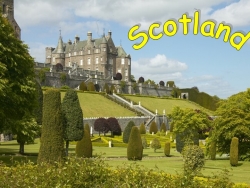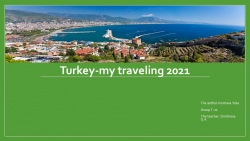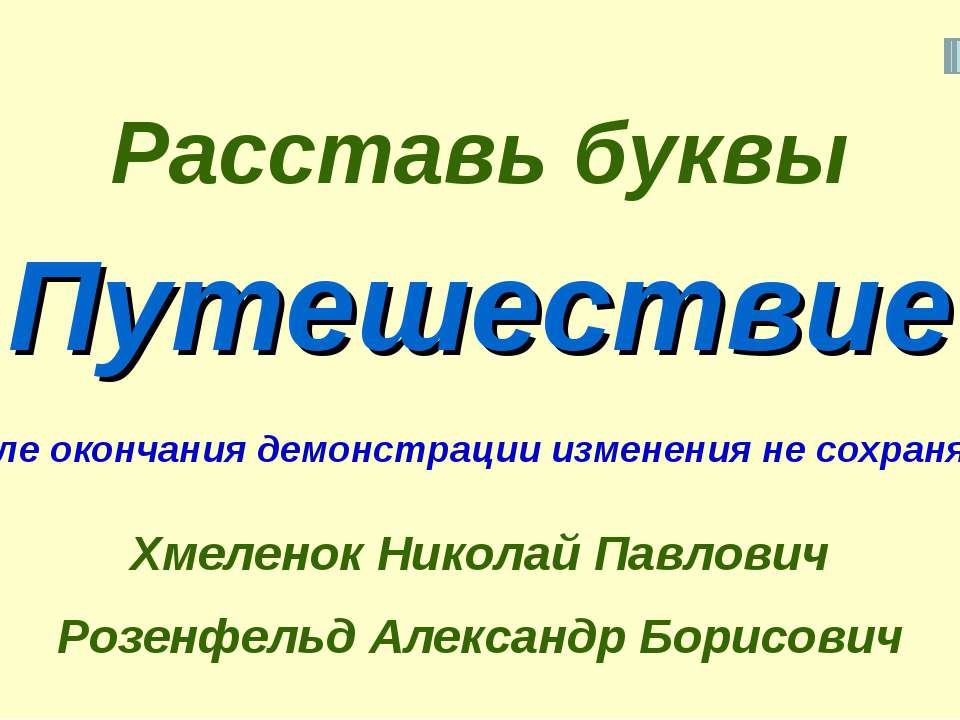Презентация по английскому языку "Путешествие по Шотландии"

- Рубрика: Презентации / Другие презентации
- Просмотров: 79
Презентация для классов "Презентация по английскому языку "Путешествие по Шотландии"" онлайн бесплатно на сайте электронных школьных презентаций uchebniki.org.ua
Scotland is the most northern of the countries that constitute the UK. It occupies an area of 78, 8 thousand sq. km.
Scotland is washed by the Atlantic Ocean in the north and west and by the North Sea in the east. The coastline of Scotland is greatly indented. In many places deep fiords penetrate very far inland.
Geographically the territory of Scotland can be divided into three regions: the Northern Highlands, the Central Lowlands and the Southern Uplands.
Scotland is a very beautiful country. The Old Scotland is a land of ballades, legendary heroes, knights, outlaws, beautiful queens, brave and cruel kings.
The New Scotland is quite different from the traditional traveler’s vision of bagpipes, kilts, tartans and the like. New Scotland is a land of steel and ships, coal and power, of factories and great ports; of modern literature and music.
“Scottishness”
Scotland is a country with an intense national tradition, a tradition very much alive even now. Scotland is a part of Britain. But Scotland is not England. It has its own national heroes, its own national drink Scotch. There is also a distinctive national dress, the kilt. Scotland has its own typical musical instrument, the pipes, its own national dances, Highland dances and Scottish country dances; its own songs (some of which are very popular all over Britain), its poetry, traditions, food and sports, even education, and manners.
Highlands and
Highlanders
For centuries the Highlands were a strange land, where the king’s law, common to all the rest of country, wasn’t even known; where wild men spoke a language no one could understand, where any thing might, and did, happen. What are the Highlands, and how did it happen? The answer is – the Granite Curtain. Until two hundred years ago the British Government found it wiser to leave them alone, this Celtic people, people of great courage and quick to take offence.
The Highlands are a mountainous country, and the people who live there, were cut off from the rest of Britain. This was the origin of the clan system. The members of the community all bore the same surname, they were all Mackenzies, or MacDonells, or Macleods - they had one chief.
The Highlands were covered with clans, and the chiefs made their own laws and their own wars. This lasted for centuries. And ended when Bonnie Prince Charlie and his Highlanders were defeated in the 18th century.
The tartan and the kilt
And out of this tartan his kilt is made– the most essential part of the Scottish national dress, to be more exact, the national dress of the Highlands. Its origin is very ancient. The Celtic tribes who fought Ceaser wore kilts. When the Celts moved north up through brought the kilt with them. It is probably the best walking-dress yet invented by man: there is up to 5 metres of material in it; it is warm, it is airy, leaves the legs free for climbing; briefly it is warm for a cold day, and cool for a warm one.
The Celts were fond of bright colours. They died their wool before weaving it; the dyes were made from various roots and plants which grew in this or that bit of land.
Clans decorated their wool differently so as to distinguish the clansmen in battle. That is why every Scottish clan has its own tartan.
One – a nobleman, proud, haughty, aloof; the other – a businessman, thrifty, shrewd, alert. Edinburgh – the capital, Glasgow – the heart of industry. One – living in its great past; the other – a town of today; active, prosperous; beautiful and ugly;
The Tale of two cities
It is about the two contrasting cities, Glasgow – Edinburgh, the two great centres of Scotland. Both are children of the same mother – Scotland – but, oh, how unlike each other they are!
Glasgow
Edinburgh
Glasgow is the largest and busiest town of Scotland, the heart of industry, with great shipyards, where many of Britain’s most famous liners are constructed. The estuary of the Clyde is very picturesque; the many lochs are most attractive.
Glasgow
Glasgow made the Clyde and the Clyde made Glasgow is the local saying.
Edinburgh is popularly known as the Athens of the
North because of its seven hills.
Edinburgh
The principal street, Princes Street, a mile long, is very modern and bright, with beautiful houses, elegant shops and restaurants, cinemas and cafes, - all on one side of the street. The other side borders a deep valley filled with trees and flowers and lawns.
Princess Street
A monument two hundred feet high, Gothic in style, rises abruptly from the ground, from a green cluster of trees. A poem in stone they call it – the Scott memorial. Like a fantastic needle, it points to Scotland’s blue sky, which the famous writer cherished all his life.
The Scott Monument
The Castle hangs over the city like some Disney cartoon – but it is real. The Castle, in fact is older than the city. No one can say exactly when the first settlers came to live on the huge rock that stands high above Edinburgh. Later they built a castle that used to be a fortress and then a royal palace.
It looks good in any weather but at night when it is floodlit it looks just like a castle in a fairy tale. It is not surprising that the Castle attracts a lot of tourists.
Holyrood Palace is a place of great interest. Here Queen Mary Stuart held court. Here her son James, King of Scotland, received the horseman who came speeding from London to announce the death of Queen Elizabeth I and that he was king of England now. Thus the Union was enacted. Many other events of the long history of Scotland are connected with Holyrood.
Holyrood House is the residence of the Queen, when she is in Edinburgh
Holyrood Palace
The most picturesque part of the Royal Mile is the Cannongate, which gives a good idea of what the Old Town was like.
Closes (narrow passages) lead to little yards and attractive historical buildings.
The Cannongate
The Edinburgh Festival embraces almost all arts. Now the Festival includes not only opera, ballet and music of all kinds. But painting, folk-dancing, films and drama – they are all represented. All the theatres and concert halls of Edinburgh open their doors to the Festival performances, to the best theaters, orchestras, soloists, dancers of the world.
The Edinburgh Festival
The Festival is ended by a splendid colourful Tattoo in front of the Castle. The Edinburgh military tattoo is a show, where the performers play military music and march to it for 90 min on 5 or 6 nights a week.
The military Tattoo
Scotland is famous for its people
James Watt, Father of the Steam Engine
Walter Scott, one of the greatest Scottish writers, the author of “Ivanhoe”, “The Talisman” and other historical novels
Robert Burns, the great Scottish poet. His poetry was inspired by his deep love for his Motherland, for its history and folklore.



























